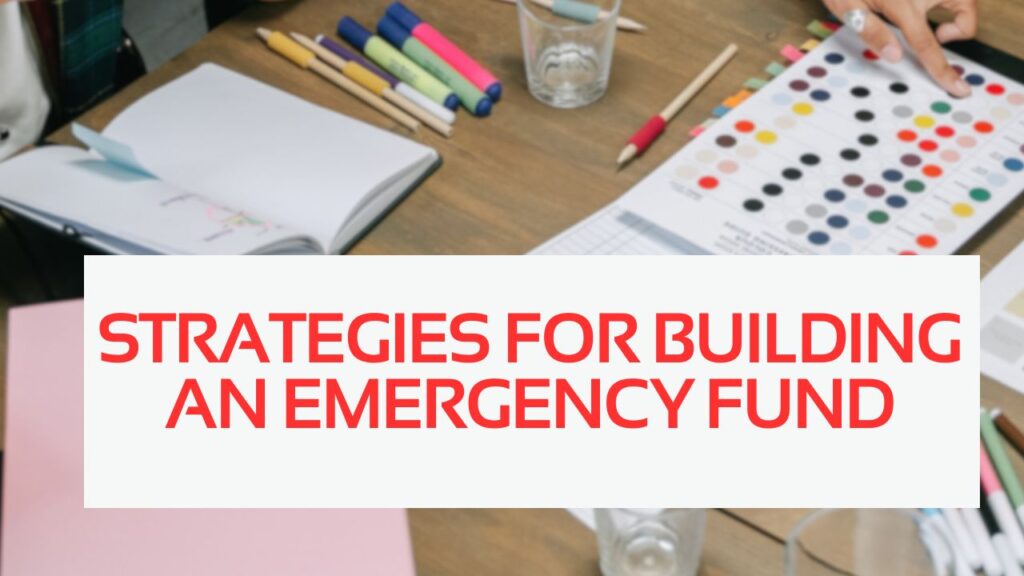In the rollercoaster ride of life, unexpected expenses can derail even the best-laid financial plans. Whether it’s a sudden medical bill, a car repair, or a job loss, having an emergency fund can provide a crucial safety net, offering peace of mind and financial stability in times of crisis. However, building an emergency fund requires discipline, foresight, and a solid strategy. In this article, we’ll delve into effective strategies for building and maintaining an emergency fund, ensuring you’re prepared for whatever life throws your way.
Tips to Build an Emergency Fund:
1. Establishing a Solid Foundation
Before diving into building your emergency fund, it’s essential to lay a solid foundation by assessing your current financial situation. Take stock of your income, expenses, debts, and savings goals. Understanding your cash flow will help you determine how much you can realistically set aside for emergencies without compromising your other financial obligations.
2. Setting Realistic Goals
Once you have a clear understanding of your finances, set realistic goals for your emergency fund. Aim to save at least three to six months’ worth of living expenses. However, this can vary depending on your circumstances. If you have dependents or work in an unstable industry, you may want to aim for a larger cushion.
3. Automating Savings
One of the most effective ways to build an emergency fund is to automate your savings. Set up automatic transfers from your checking account to a designated savings account each month. Treating your emergency fund contributions like a non-negotiable expense ensures that you consistently contribute to your fund without relying on willpower alone.
4. Cutting Expenses and Increasing Income
Finding extra room in your budget can accelerate your emergency fund growth. Look for areas where you can cut expenses, such as dining out less frequently, cancelling unused subscriptions, or negotiating lower utility bills. Additionally, consider ways to increase your income, whether through overtime at work, freelancing, or selling items you no longer need.
5. Avoiding Temptation
As your emergency fund grows, it can be tempting to dip into it for non-emergencies. However, it’s crucial to resist this temptation and maintain the integrity of your fund. Remind yourself of the purpose of the fund—to provide financial security in times of crisis—and only use it for true emergencies.
Conclusion
Building an emergency fund is a vital component of financial health and resilience. By establishing a solid foundation, setting realistic goals, automating savings, cutting expenses, and avoiding temptation, you can create a robust safety net that will protect you against life’s unexpected curveballs. Remember, consistency and discipline are key to success. Start small, stay focused, and watch your emergency fund grow, providing you with the peace of mind and financial security you deserve.
FAQs
How much should I aim to save in my emergency fund?
Aim to save at least three to six months’ worth of living expenses, but adjust based on your circumstances and risk tolerance.
Should I prioritize paying off debt or building an emergency fund?
It’s generally recommended to build a small emergency fund before aggressively paying off debt. Once you have a small cushion, you can focus on debt repayment while continuing to contribute to your emergency fund.
Where should I keep my emergency fund?
Keep your emergency fund in a separate, easily accessible savings account. Look for an account with a competitive interest rate and no withdrawal restrictions.
What qualifies as an emergency?
Emergencies are unexpected expenses that threaten your financial stability, such as medical bills, car repairs, or job loss. Avoid using your emergency fund for non-essential purchases or planned expenses.
How can I stay motivated to contribute to my emergency fund?
Set specific savings goals, track your progress regularly, and remind yourself of the peace of mind and financial security that an emergency fund provides. Celebrate milestones along the way to stay motivated.







